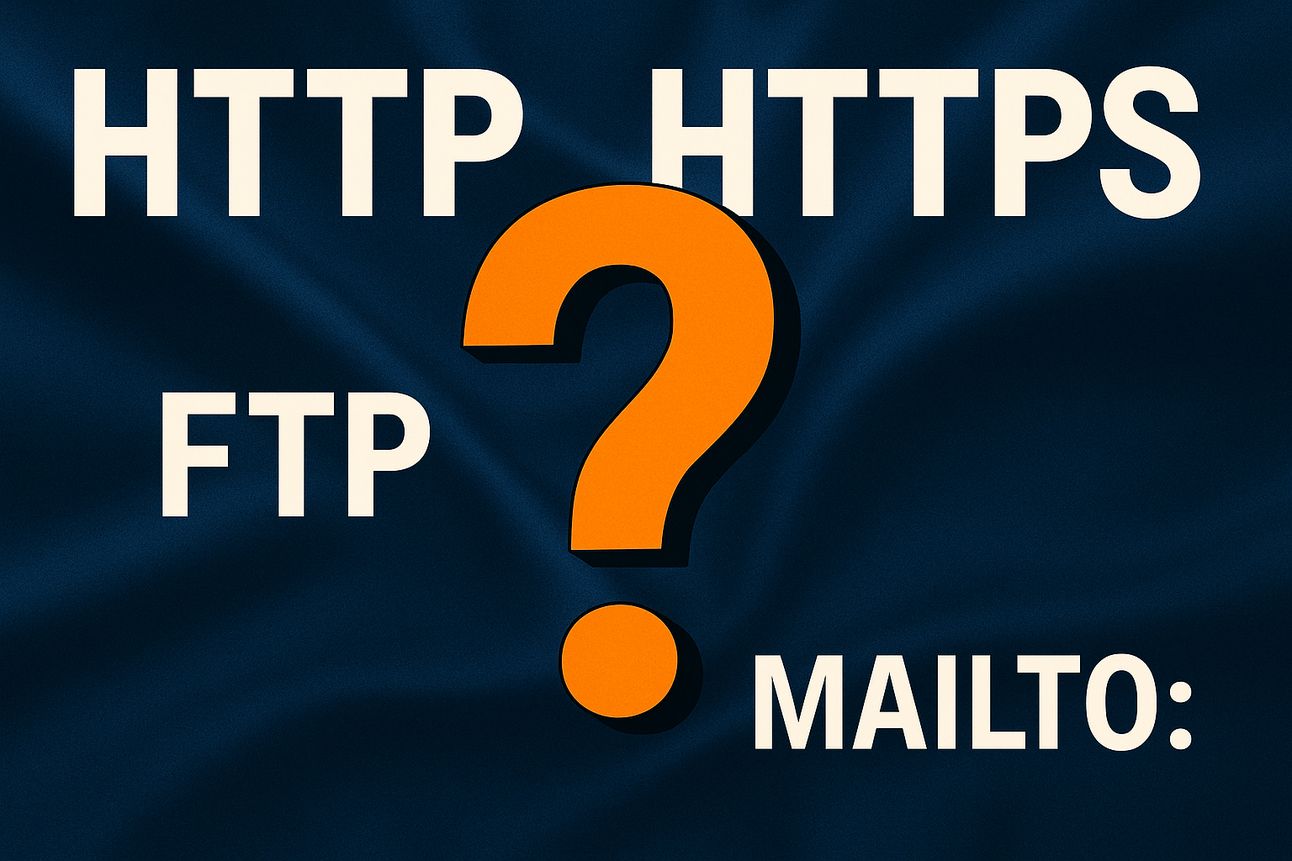- The Cyber Safety Newsletter
- Posts
- 🌐 HTTP What? A Basic Explanation of Web Addresses
🌐 HTTP What? A Basic Explanation of Web Addresses

Ever wonder what all those letters at the start of a website mean?
You type in “https://something.com” and go about your day. But those first few characters—HTTP, HTTPS, FTP, and others—aren’t just tech gibberish. They’re protocols, and they quietly tell your device how to talk to the website you're visiting.
Here’s what that means—and why it matters for your security and privacy.
📦 First, What Is a “Protocol”?
A protocol is just a fancy word for an agreed set of rules that computers follow to share information.
Think of it like speaking the same language. If your phone and a website both “speak HTTP,” they can exchange information in a way that makes sense.
🌍 Let’s Break Down a Web Address
Take this one:
https://example.com/page
https – This is the protocol (how your browser talks to the site)
example.com – This is the domain (the site’s name)
/page – This is the path (what page or file you’re asking for)
We’re focusing on the protocol part—what comes before the ://.
🔐 The Most Common Protocols
✅ HTTPS – Secure Website Connection
HyperText Transfer Protocol Secure
This is the most common one you’ll see. The “S” stands for secure—your data is encrypted between your browser and the website.
📌 Look for this when: You’re entering passwords, payment info, or personal data.
🔒 Why it matters: Keeps hackers from eavesdropping or changing what you see.
💡 Tip: If a site still uses just HTTP, avoid entering sensitive info.
❌ HTTP – Old and Insecure
HyperText Transfer Protocol
Same as HTTPS, but without the security. Data is sent in plain text.
📌 Look for this when: Browsing older or sketchy sites.
⚠️ Why it matters: Anyone on the same network (like public Wi-Fi) could intercept your data.
🔄 FTP – File Transfer Protocol
Used to upload/download files between computers and servers. Not common for everyday browsing.
📌 You might see: ftp://example.com/file.zip
📦 Why it matters: Often used by website managers or file servers. Not secure unless paired with encryption.
📡 Mailto, Tel, File, and Others
You might also see:
mailto:– Opens your email apptel:– Opens your phone dialerfile:– Accesses a local file on your computer
These aren't websites—they trigger actions.
🧠 So... Why Should You Care?
Because knowing what protocol you're using helps you:
✅ Know when your connection is secure
✅ Spot outdated or suspicious sites
✅ Understand when not to share personal info
✅ Feel just a bit more confident navigating the internet
✅ TL;DR (Too Long; Didn’t Read)
HTTPS = Safe, encrypted browsing
HTTP = Unsecure, avoid for sensitive stuff
FTP = File transfers
Other protocols = Do specific actions like email or calling
🧭 Next time you click a link, glance at the protocol. It’s like checking if your seatbelt is fastened before the ride begins.
Want to learn more tips for personal cyber safety? Subscribe or read past issues at:
👉 https://newsletter.thecybersafety.company
Have a topic you'd like us to cover?
📬 Email me directly at [email protected]
Until next time — stay private, stay safe.
— Peter Oram
Chief Cyber Safety Officer
FOLLOW US ON SOCIAL MEDIA


